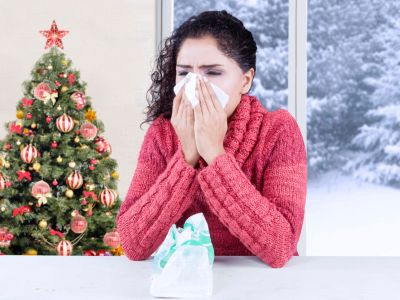Am I Allergic to My Christmas Tree?
If you’ve never heard of Christmas tree allergies, you are not alone. Many of our readers have never seen information about this type of holiday issue. Yet, it may be partially responsible for the bouts of colds and flu reported around the holidays. Can you be allergic to Christmas trees? The simple answer is you may or may not be, but lots of people out there react to the mold, dust, and dust mites found on or near cut evergreens which can cause allergies.
Christmas Tree Allergen Information
There are a variety of ways your Christmas tree can make you feel sick. According to Christmas tree allergen info, conifers can produce a variety of different types of molds that are potential allergens, increasing the risk of wheezing and coughing. Studies have shown that one cut pine tree in the house can increase by a multiple of six the number of microscopic mold spores in an apartment. The mold count in the air keeps rising while the tree is present and doesn’t drop to normal levels until the tree is removed. The presence of the decorated trees also raises the possibility of dust or dust mites, either on the trees themselves or on stored ornaments and Christmas lights. This can also be the cause of Christmas tree allergies if you use an artificial tree. Some people even react to the tree’s strong fragrance.
Preventing Christmas Tree Allergies
While allergies caused by Christmas trees are very real, there’s no need to turn into Scrooge and forgo the tree. A few preventative measures should help you get through the holidays with a tree in place. Before the tree comes into the house, wash it down well with the hose and let it dry fully in a warm spot. This goes for both live trees and artificial ones, as well as decorations too. You can also spray the tree with water containing a small amount of bleach that kills growing mold spores. In addition, put the tree up later and take it down earlier. Wait until the week before Christmas to bring in the tree, then say goodbye just after New Year’s Day. Reducing the exposure reduces the time that mold is developing.
